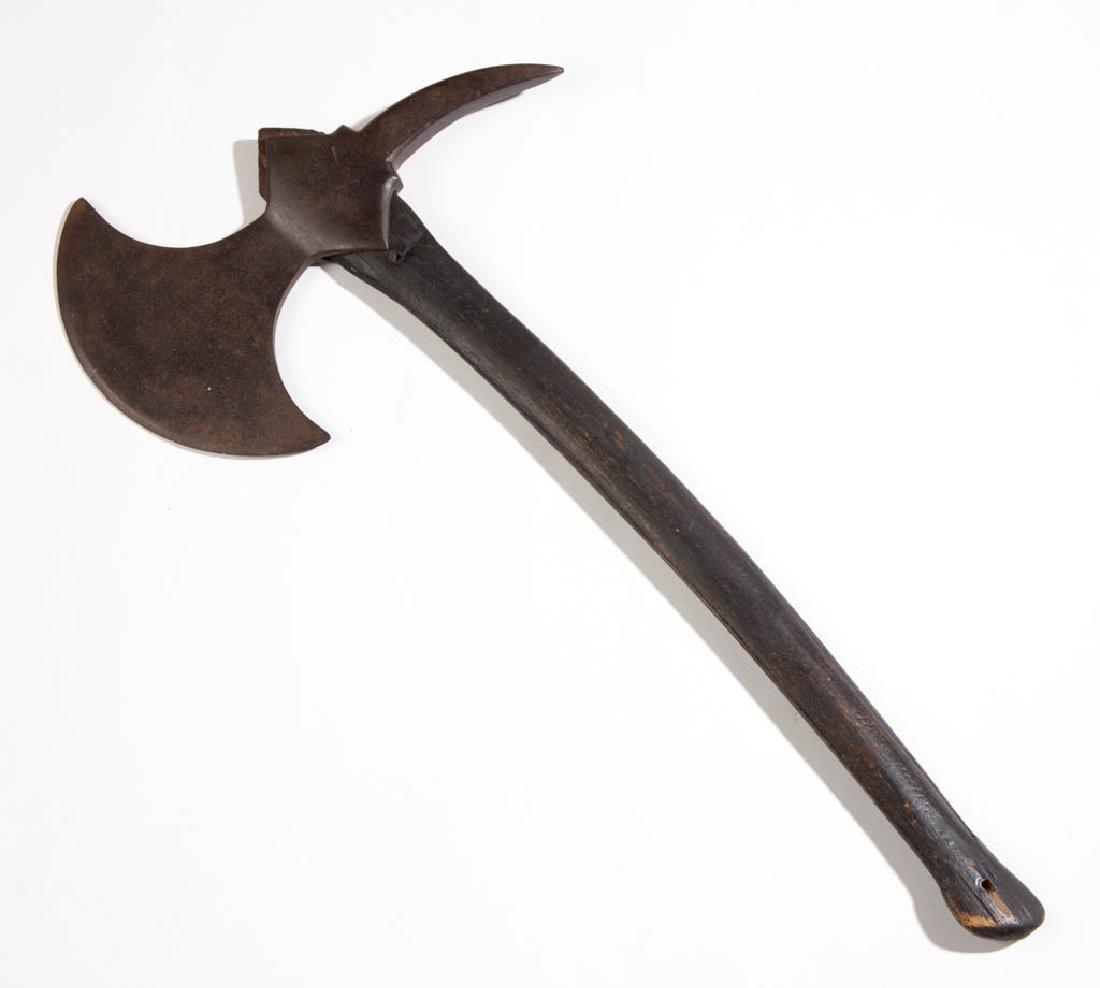

When the Romans invaded modern day Spain in 218 B.C., they came face to face with a barbarian tribe known as the Celtiberians. While she succeeded in razing three Roman Briton cities, her war charioteers were eventually hemmed in and slaughtered at the Battle of Watling Street.Ĭredit: Falconaumanni via Creative Commons/Wikimedia revolt of the warrior queen Boudica, who united several Celtic tribes against the Romans. “They drive about in all directions and throw their weapons and generally break the ranks of the enemy with the very dread of their horses and the noise of their wheels,” Caesar wrote, “and when they have worked themselves in between the troops of horse, leap from their chariots and engage on foot.” The British chariot later took a starring role in the 60 A.D.
#Celtic battle axe drivers
In combat, they functioned as a kind of ancient personnel carrier: drivers would drop a lone warrior near the fighting, race to safety and then return to pick the soldier up if he was injured or needed to withdraw. These vehicles were usually two-horse affairs with iron-rimmed wheels and sturdy platforms made of wicker and wood. (Credit: Universal History Archive/UIG via Getty Images)ĭuring his campaigns in Britain in 55 and 54 B.C., Julius Caesar became the first Roman general to encounter the war chariots of the native Celtic tribes. It was particularly popular among the Varangian Guard, a band of Viking mercenaries who served as bodyguards for Byzantine emperors in the 10th and 11th centuries.ĭrawing depicting Boudica on a chariot. “And they are accustomed always to throw these axes at one signal in the first charge and shatter the shields of the enemy and kill the men.” The axe was one of the many barbarian weapons that carried over into the medieval world.

“The iron head of this weapon was thick and exceedingly sharp on both sides while wooden handle was very short,” the historian Procopius wrote of the francisca in the sixth century A.D. The Franks, meanwhile, were partial to a lightweight axe known as a “francisca,” which could be used as a hacking weapon or hurled at close range as a projectile. While most tribal warriors carried spears or swords into combat, Germanic soldiers were known to wield heavy battle-axes capable of smashing through shield, armor and helmet in a single blow. Boasting a natural Sandhan wood shaft engraved with Norse runes and a 6” semi-sharp carbon steel blade, it’s a beautiful piece that will look great in your collection.Credit: Universal History Archive/Getty Imagesįew barbarian weapons inspired more horror than the axe. These long 24” battle axes are well-balanced and weigh in at just 2.15 lbs. The ring knife and the axe are both made from the highest-quality steel that’s been forged by an experienced blacksmith to offer long-lasting resilience and durability. You may sharpen them further if you wish for a sharper blade. Our blades come sharp enough to create dull cuts but not sharp enough that they’re dangerous just to pick up. Viking and Celtic Inspired Craftmanship.Rustic Hardwood Display Case – Each metal Viking axe and Celtic neck knife also include a decorative wooden display box to help protect your new vintage replica pieces and to help you proudly display them at home or in an office.That means each one has been carefully crafted and balanced from hilt to blade using premium steel, genuine wood, and authentic leather adornments. Battle-Tested Steel – Each of our Viking Culture replica pieces are 100% functional items.Norse-Inspired Craftsmanship – The Skeggøx Viking hand axe and Celtic ring knife set were made to mimic their real-world counterparts crafted by Vikings thousands of years ago, which makes them a truly piece to add to any Medieval collection.



 0 kommentar(er)
0 kommentar(er)
